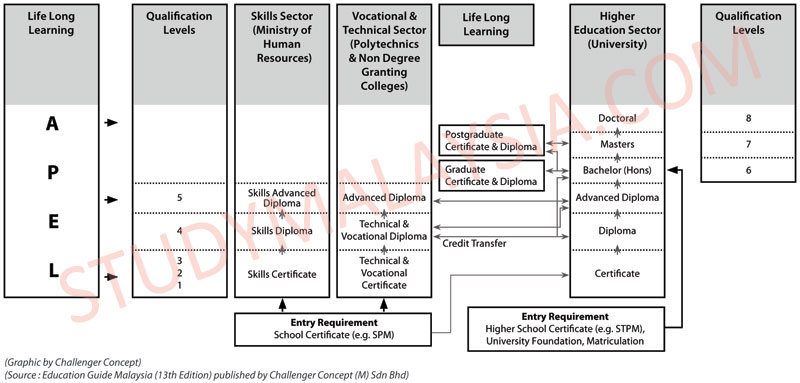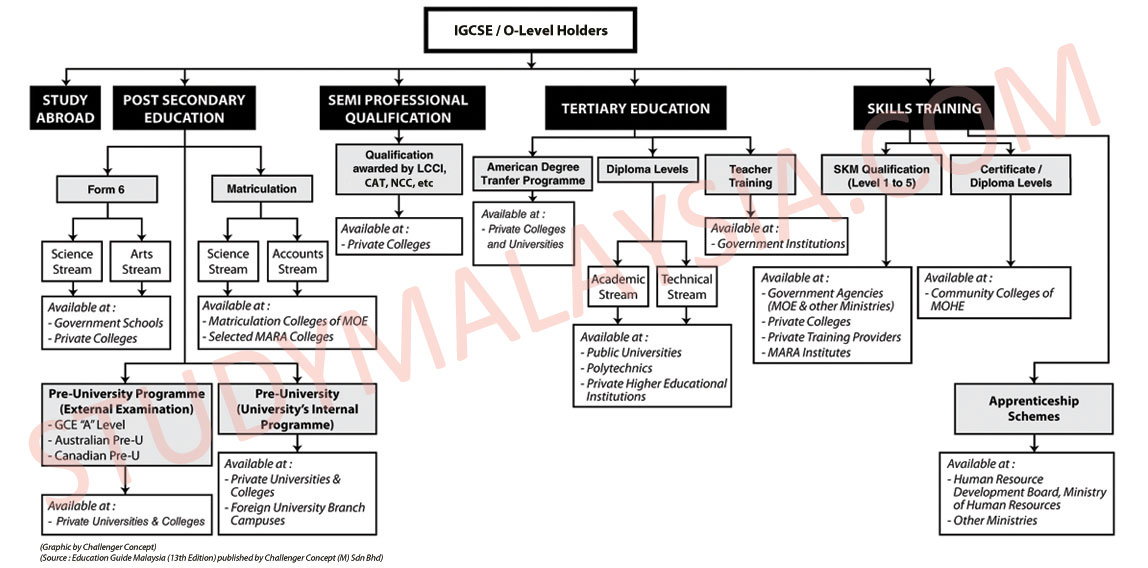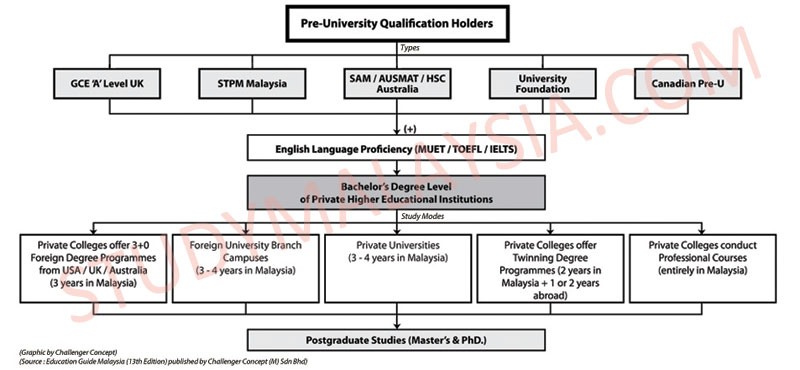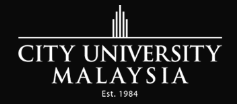What's Next? Your Higher Education Options in Malaysia
Introduction
Now that you have completed (or are about to complete) your secondary schooling, you probably want to know what higher education options there are out there. The process of deciding on the right higher education options can be full of overwhelming decisions. Along with what to study, you will need to consider which country and institution to choose, and think about the type of qualification you would like to acquire.
Academic Qualifications in Malaysia
For those of you who have known for a while now what career path you want and have decided to come to Malaysia to study, figuring out your next step in education could be quite easy. For those who wish to know more about what study opportunities Malaysia has to offer you, please visit www.studymalaysia.com
Once you have narrowed down your options for a particular subject, field of study or type of programme in Malaysia, check the website of institutions that offer this programme to get a better picture of the course structure. A good list of information to find out would be the required entry qualifications, study duration, modules offered, methods of study (e.g. lectures, workshops, work placements, projects, etc.) and study mode, i.e. part-time or full-time study, or even distance learning.
In the following section, we will examine the different qualifications available in Malaysia to international students like you.
(A) Pre-university Qualifications
At pre-university level, students who have completed 11 years of education (e.g. O-Level) can continue with pre-university studies such as GCE 'A' levels, IB Diploma, Australian Matriculation, just to name a few, which is offered by many private higher educational institutions (HEIs). A pre-university qualification is a basic entry requirement for a bachelor degree at HEIs and takes about 12-18 months to complete.
(B). Academic Qualifications at Higher Education Level
Higher education includes qualifications at certificate, diploma, undergraduate as well as postgraduate levels. The providers of higher education are colleges, polytechnics and universities. Undergraduate studies consist of bachelor degree programmes and professional studies while postgraduate studies consist of master and doctoral degrees.
Higher education at certificate and diploma levels are mainly for students with IGCSE or 'O' level qualifications while the bachelor degree level is usually for students with pre-university qualifications such as to GCE 'A' levels or other university foundation qualifications. Degree programmes typically take between three to five years to complete, after which some students may opt to proceed to postgraduate studies.
In Malaysia, higher education in the academic and professional fields is provided by:
- Public-funded HEIs which include public universities and public colleges; and
- Privately-funded HEIs which include private universities, private colleges and foreign university branch campuses.
The Ministry of Education (MOE) is directly responsible for the operation and performance of public HEIs, whereas private HEIs are guided by MOE's policy guidelines and objectives.
The general entry requirements and duration of study at certificate, diploma, undergraduate and postgraduate levels (academic) can be grouped as below:
| Table 1.1: Higher Education Qualification Levels, Its Entry Requirements and Duration of Study | |||
|---|---|---|---|
| Academic Qualification Level | Type of Students | Estimated Age Group | Duration of Study |
| Certificate level | For students with secondary school qualifications such as O-levels | 17 and above | 1 to 1.5 years |
| Diploma level | For students with secondary school qualifications such as O-levels | 17 and above | 2 to 3 years |
| Bachelor's degree level | For students with pre-university qualifications such as GCE A-levels, IB diploma, etc. | 19 and above | 3 to 5 years |
| Master's degree | For students with a bachelor's degree | Any adult | 1 to 3 years |
| PhD (Doctor of Philosophy) | For students with a master's degree | Any adult | 3 to 5 years |
The qualifications awarded by all HEIs (both public and private) in Malaysia are registered under laws related to Malaysian education and are governed by the Malaysian Qualifications Framework (MQF). The framework specifies that a programme is required to achieve a minimum number of credits before an academic qualification can be awarded, e.g. certificate (60 credits), diploma (90 credits), bachelor degree (120 credits) and taught master degree (40 credits). Master and doctoral degrees obtained by research do not have credit values (see Table 1.2).
| Table 1.1: Higher Education Qualification Levels, Its Entry Requirements and Duration of Study | ||
|---|---|---|
| Education levels | Higher education qualification | Minimum credit required for the award of qualification |
| 8 | Doctoral | No given credit value |
| 7 | Research master degree | No given credit value |
| 7 | Fully or partly taught master degree | 40 |
| 7 | Postgraduate diploma | 30 |
| 7 | Postgraduate certificate | 20 |
| 6 | Bachelor degree |
120 |
| 6 | Graduate diploma |
60 |
| 6 | Graduate certificate |
30 |
| 5 | Advanced diploma | 40 |
| 4 | Diploma | 90 |
| 3 | Certificate | 60 |
| 1-3 | Skills certificate | According to the skill and levels |
Source: Malaysian Qualifications Agency
Types of Higher Education Providers in Malaysia
Once you have a short list of the courses you would like to study, the next thing to do is look at the universities or colleges that offer them.
Before you decide, let us take a closer look at the types of HEIs in Malaysia. You may be surprised at what you thought you knew (or didn't!).
Higher education providers in Malaysia can be grouped into two major categories, viz. public HEIs (government funded), and private HEIs.
(A). Public Higher Educational Institutions
Public HEIs consist of universities, polytechnics, community colleges and colleges. There are 20 public universities (see Table 1.3), 32 polytechnics and 72 community colleges. In addition, there are 27 teacher education institutes which prepare candidates to become teachers at primary and secondary schools in Malaysia.
Public universities offer bachelor degrees and postgraduate programmes, with some offering programmes at diploma level and university foundation programmes. Polytechnics and community colleges offer certificate and diploma level programmes.
(Note: To look up the courses offered at these institutions and their entry requirements, please log onto www.studymalaysia.com)
| Table 1.3: List of Public Universities in Malaysia |
|---|
|
[Note: These 20 public universities can be further classified as five research, four broad-based and eleven specialised universities. The five public universities that have been designated as research universities are Universiti Malaya (UM), Universiti Putra Malaysia (UPM), Universiti Kebangsaan Malaysia (UKM), Universiti Sains Malaysia (USM) and Universiti Teknologi Malayisa (UTM). USM has also been awarded Apex university status.]
(B). Private Higher Educational Institutions
Private HEIs come under the jurisdiction of MOE and comprise universities, university-colleges and foreign university branch campuses which award their own degree qualifications, diploma programmes and foundation studies. In contrast, private colleges award their own qualifications at diploma and certificate levels, and offer 3+0 degrees, split-degrees and tutorial support for professional qualifications.
At the beginning of 2013, there are 37 private universities, 20 private university-colleges (see Table 1.4 and Table 1.5) and about 345 active private colleges in Malaysia. In addition, there are currently eight foreign university branch campuses in the country (see Table 1.6). Students who wish to obtain a degree from a foreign university have the option of enrolling at a branch campus of these foreign universities in Malaysia.
Table 1.4: List of Private Universities in Malaysia |
|---|
| 37 Private Universities |
1. Multimedia University (MMU), Cyberjaya / Melaka, established in 1997 |
20 University Colleges |
1. International University College of Technology Twintech (IUCTT), Kuala Lumpur /Kelantan/Sabah, upgraded in 2003(3 campuses : Kuala Lumpur campus, Sabah campus, and Kelantan campus) |
| Table 1.6: List of Foreign University Branch Campuses in Malaysia | |||
|---|---|---|---|
| 8 Foreign University Branch Campuses | |||
| NO. | NAME OF BRANCH CAMPUS | LOCATION IN MALAYSIA | COUNTRY OF ORIGIN |
| 1. | Monash University Sunway Campus Malaysia, established in 1998 | Selangor | Australia |
| 2. | Curtin University, Sarawak Malaysia, established in 1999 | Sarawak | Australia |
| 3. | The University of Nottingham Malaysia Campus, established in 2000 | Kuala Lumpur | United Kingdom |
| 4. | Swinburne University of Technology (Sarawak Campus), established in 2004 | Sarawak | Australia |
| 5. | Newcastle University Medicine Malaysia, established in 2009 | Johor | United Kingdom |
| 6. | University of Southampton Malaysia Campus, established in 2011 | Johor | United Kingdom |
| 7. | Heriot-Watt University Malaysia, established in 2012 | Putrajaya | United Kingdom |
| 8. | University of Reading Malaysia campus, established in 2013 | Johor | United Kingdom |
3+0 Degree Programmes
3+0 degree programmes are a result of a special arrangement between a Malaysian HEI and a foreign university. Students who pursue a 3+0 degree programme get to complete a degree entirely in Malaysia and still earn a foreign university degree qualification. The table below provides a list of some private colleges and private universities in Malaysia that conduct 3+0 degree programmes.
| Table 1.7: Examples of 3+0 Status Private Higher Educational Institutions (PHEIs) and their University-Partners | |
|---|---|
| Name of PHEI | Awarding Body |
| Han Chiang College | University of Southern Queensland, Australia University of Wolverhampton, UK |
| HELP Academy | University of East London, UK |
| HELP College of Arts & Technology | Northumbria University, UK University of Hertfordshire, UK Southern New Hampshire University, USA |
| INTI International College Penang | University of Bradford, UK University of Wollongong, Australia |
| INTI College Sabah/INTI College Sarawak | University of Hertfordshire, UK |
| INTI College Subang Jaya | University of Hertfordshire, UK University of Wollongong, Australia Northwood University, USA |
| KBU International College | Anglia Ruskin University, UK Nottingham Trent University, UK Sheffield Hallam University, UK |
| KDU University College, Damansara Jaya Campus | IMI University Centre, Lucerne, Switzerland Murdoch University, Australia Northumbria University, UK |
| KDU College Penang Campus | IMI University Centre, Lucerne, Switzerland Keele University, UK Northumbria University, UK |
| KDU University College, SS13 Petaling Jaya Campus | Keele University, UK Murdoch University, Australia |
| Kolej Poly-Tech MARA | Coventry University, UK |
| Limkokwing Executive Leadership College | Anglia Ruskin University, UK Curtin University, Australia |
| Limkokwing Institute of Creative Technology, Sarawak | Anglia Ruskin University, UK |
| MAHSA University | Northumbria University, UK University of Teesside, UK |
| SEGi College Kuala Lumpur | University of Abertay Dundee, UK University of Greenwich, UK University of Sunderland, UK |
| SEGi College Penang | University of Greenwich, UK University of Sunderland, UK University of Teesside, UK |
SEGi College Sarawak |
University of Sunderland, UK |
| SEGi College Subang Jaya | University of Greenwich, UK University of Southern Queensland, Australia University of Sunderland, UK University of Teesside, UK |
| SEGi Univesity College | University of Sunderland, UK University of Teesside, UK |
| Southern College | Teesside University, UK University of Wales, UK |
| Taylor’s University | RMIT University, Australia University of South Australia, Australia University of The West of England, Bristol, UK University of Toulouse, France |
| TPM College | University of Ballarat, Australia |
| PTPL College | Anglia Ruskin University, UK |
| Sunway College | Victoria University Melbourne, Australia |
(Note: This list is by no means exhaustive and serves as an illustration only).
(Note: For a list of courses offered at these institutions, please log onto www.studymalaysia.com)
The Quality of Your Education
While you are going through the process of deciding which institution you would like to attend, you may have thought about the quality of the education you will receive.
In Malaysia, the quality of higher education is assured through the Malaysian Qualifications Agency (MQA) which undertakes the implementation of the Malaysian Qualifications Framework. MQA is also responsible for quality assurance and the accreditation of courses and other related functions, covering both public and private HEIs.
The internationalisation of the higher education sector is a high priority for MOE MOHE. Efforts have been made to improve the world ranking of Malaysian universities; to have 150,000 international students by 2015; to create more ‘Malaysian Chairs’ at universities abroad; and to collaborate and cooperate with world-renowned universities on research and academic matters. The government will also continue to create a favourable environment for more world-class foreign university branch campuses or faculties to be set up in Malaysia.
Rating of HEI
SETARA (Rating System for Higher Education Institutions in Malaysia) was implemented in 2009 to measure the performance of undergraduate teaching and learning in universities and university colleges in Malaysia. The SETARA result is measured using a six-tier category with Tier 6 identified as outstanding and Tier 1 as weak.
Subsequently, another rating system was introduced in 2011. MyQUEST (Malaysian Quality Evaluation System for Private Colleges) is used to evaluate private colleges in Malaysia in terms of the quality of students, programmes, graduates, resources and governance. The MyQUEST rating categorises an institution as either excellent, good, or weak. The institutions would also receive a rating based on their level of achievement which ranges from 1 star (poor) to 6 stars (excellent).
These two rating systems serve as an additional reference for students and parents in their selection of institutions and programmes of study offered by various HEIs.
What is the Malaysian Qualifications Framework?
The Malaysian Qualifications Agency (MQA) is entrusted with implementing the national framework known as the Malaysian Qualifications Framework (MQF).
The purpose of MQF is to provide a unified system to bind and link all the qualifications awarded in Malaysia (which includes higher education qualifications and Malaysian Skills Certificates – SKM Level 1 to 5) and serve as a reference point for all Malaysian national qualifications.
MQF is an instrument that develops and classifies qualifications based on a set of criteria that are approved nationally and is at par with international good practices at the level of learning attained by the learners. This includes learning outcomes achieved and a credit system which is based on the learner’s academic load. All the qualifications in the framework are based upon four classifications: (1) learning outcomes; (2) credit; (3) objectives; and (4) field of study.
MQF consists of eight levels of qualifications in four sectors of education. The four sectors of education are the skills sector, vocational and technical sector, life-long learning sector, and higher education (university) sector.
The eight levels of higher education qualifications are:
Levels 1 to 3 – These are the levels for skills certificates awarded by the skills sector; vocational and technical certificates awarded by the vocational and technical sector; and certificates (Level 3) awarded by the higher education sector.
Levels 4 and 5 – These levels are for diploma and advanced diploma (general degree) programmes respectively awarded by the vocational and technical sector, skills sector and higher education sector.
Level 6 to 8 – Level 6 is for the first tertiary qualification, i.e. bachelor degree with honours while Level 7 is for master degrees and Level 8 for doctoral degrees. Under the lifelong learning category are graduate certificates and diplomas; and postgraduate certificates and diplomas.
Table 1.8: MQA – Sectors and Qualification Levels

The Many Pathways of Higher Education Qualifications
As mentioned earlier, gaining a tertiary qualification is often associated with earning a degree. However, the higher education landscape has changed in many ways, not just in Malaysia but all over the world. There are many options for a student today when it comes to acquiring a tertiary qualification. The tables below outline the various options and study pathways you can consider at tertiary level.
Table 1.9: Study Pathway for O-Level Qualification Holders or its equivalent

Table 1.10: Study Pathway for A-Level Qualification Holders or its equivalent

Applying to a Higher Education Institution
By now your list should be a concise one, ideally narrowed down to four or five programmes you would like to apply for. There is no time to lose. Unless you plan on taking some time off before you start the next chapter of your life, it is time to start cracking on all those applications.
The most important thing you need to ensure before applying is that your qualifications meet the minimum requirement for a particular programme. Every programme or HEI will have requirements that differ slightly – nonetheless, Table 1.11 shows the general requirements for pre-university studies, certificate, diploma and bachelor degree programmes at private HEIs in Malaysia.
Table 1.11: General Entry Requirements for Pre-University, Certificate, Diploma and Degree Programmes at Private HEIs |
|
|---|---|
Education Level |
General Entry Requirements |
| University foundation programme | O Level with 5 credits, or its equivalent |
| Certificate | O Level with 1 credit, or its equivalent |
| Diploma | O Level with minimum 3 credits, or its equivalent |
| Year 1 bachelor degree | GCE A-levels + English Proficiency or its equivalent |
Applying to Study in Malaysia
As an international student, you can apply DIRECTLY to the educational institution of your choice. You are advised to apply only to institutions that have been given the approval by the relevant authorities to accept international students.
For courses at public universities - bachelor degree and postgraduate programmes - international students have to apply directly to the university of their choice for full-time mode programmes only.
For courses at private higher educational institutions e.g. pre-university studies, diploma, bachelor degree and postgraduate studies, students have to apply directly to the institution of their choice, which must have the approval of the Ministry of Home Affairs Malaysia to enrol international students. International students are only allowed to study for full-time programmes.
To facilitate the entry of international students coming to study in Malaysia, the government has set up a one-stop agency known as Education Malaysia Global Services to assist in expediting the issuance of a Student Pass to international students, and to provide other services that ease their transition to live in this country.
Reference:
Schools of Malaysia Directory (4th Edition), published by Challenger Concept (M) Sdn Bhd
This article is contributed by Challenger Concept (M) Sdn Bhd of Malaysia, the publisher for Education Guide Malaysia, an annual guidebook about education in Malaysia. For more information, please log onto www.studymalaysia.com/challenger.
Back to Studying in Malaysia Back to Overseas Education Main Page























